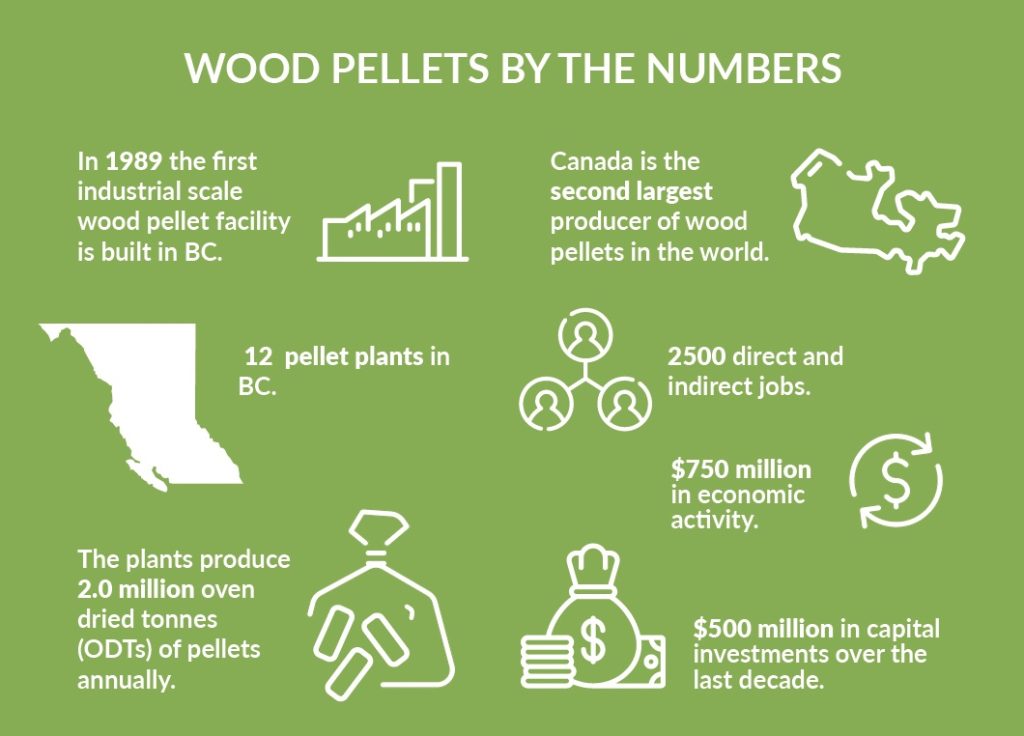
New study confirms B.C. wood pellets are responsibly sourced
September 20, 2022
By Wood Pellet Association of Canada
 Source: Wood Pellet Association of Canada
Source: Wood Pellet Association of Canada A new study confirms that wood pellets in British Columbia are sourced entirely from sawmill and harvest residuals or from low-quality logs and bush grind rejected by other industries.
The study was commissioned by the Wood Pellet Association of Canada. Respected forest experts and registered professional foresters, professor Gary Bull, Dr. Jeremy Williams, Dr. Jim Thrower and Mr. Brad Bennett, analyzed government and industry databases, confidential commercial data, and audit reports and conducted personal interviews with individual pellet plant operators and local communities.
“We reviewed the data for virtually every truckload of fibre for each pellet mill in the province and were able to source forest-based residuals down to the forest harvesting block for each mill,” said Bull. “The findings were clear: 85 per cent of the fibre for pellets comes from the by-products of the sawmills and allied industries, and the remaining 15 per cent comes from bush grind and low-quality logs where the only other option is to burn the low-grade logs and brush piles on site in order to reduce fire risk.”
In addition, almost all the pellets produced in B.C. are certified under the international recognized Sustainable Biomass Program and the fibre is from sustainably managed forests in B.C. certified under the Canadian Standards Association, the Forest Stewardship Council or the Sustainable Forestry Initiative.
“The notion of harvesting whole stands of timber or displacing higher value forest products for the purpose of producing wood pellets is counter to the overall economic and environmental objectives of using wood pellets,” added Thrower.
The study also concludes the B.C. pellet sector:
- Utilizes and creates value from the mill residuals;
- Works with Indigenous and other communities to improve forest health, support local economies, and strengthen community resiliency;
- Creates an additional revenue stream for sawmills and other facilities;
- Eliminates smoke and particulate emissions associated with beehive burners or landfills;
- Utilizes low quality biomass that comes from natural disturbances;
- Creates viable economic opportunities and employment;
- Contributes to managing wildfire risks; and
- Increases the substitution of renewable energy (biomass) for fossil fuel (coal).
Around three quarters of the world’s renewable energy is from biomass. Bioenergy accounts for about 10 per cent of total final energy consumption and two per cent of global electricity generation. In the United States and the European Union, bioenergy accounts for 60 per cent of all renewable energy. In fact, over the past 20 years, bioenergy is responsible for the most greenhouse gas (GHG) reductions, much in the form of bioheat, which has a 90 per cent share of the EU renewable heating market.
“Today our sector is taking what was once considered waste and instead is enhancing forest health, creating jobs, and reducing wildfire risk and GHG emissions from slash burning,” said WPAC executive director Gordon Murray. “British Columbia wood pellets are a vital solution in the global fight against climate change by replacing fossil fuels like coal and providing a gateway to the bioeconomy.”
The study also looked at the impact of pellets in both the broader forest sector and in communities like Burns Lake where the pellet plant has played an important role in addressing the mountain pine beetle epidemic, providing an outlet for local sawmills and low-quality roundwood and strengthening the local economy.
“As a community forest that surrounds much of the community’s recreational playground, if we didn’t practice complete utilization we would hear about it in town from the public,” said general manager Frank Varga, Burns Lake Community Forest. The Community Forest is owned by the Village of Burns Lake which equally shares its revenue with the Tsi’lKazKoh and Wet’suwet’en First Nations communities. “Without the Burns Lake Drax facility, we wouldn’t have a home for a significant component of our low-grade harvesting profile and the level of waste would not be socially acceptable.”
Download the Full Fibre Study
Download the Fibre Study Factsheet
Print this page